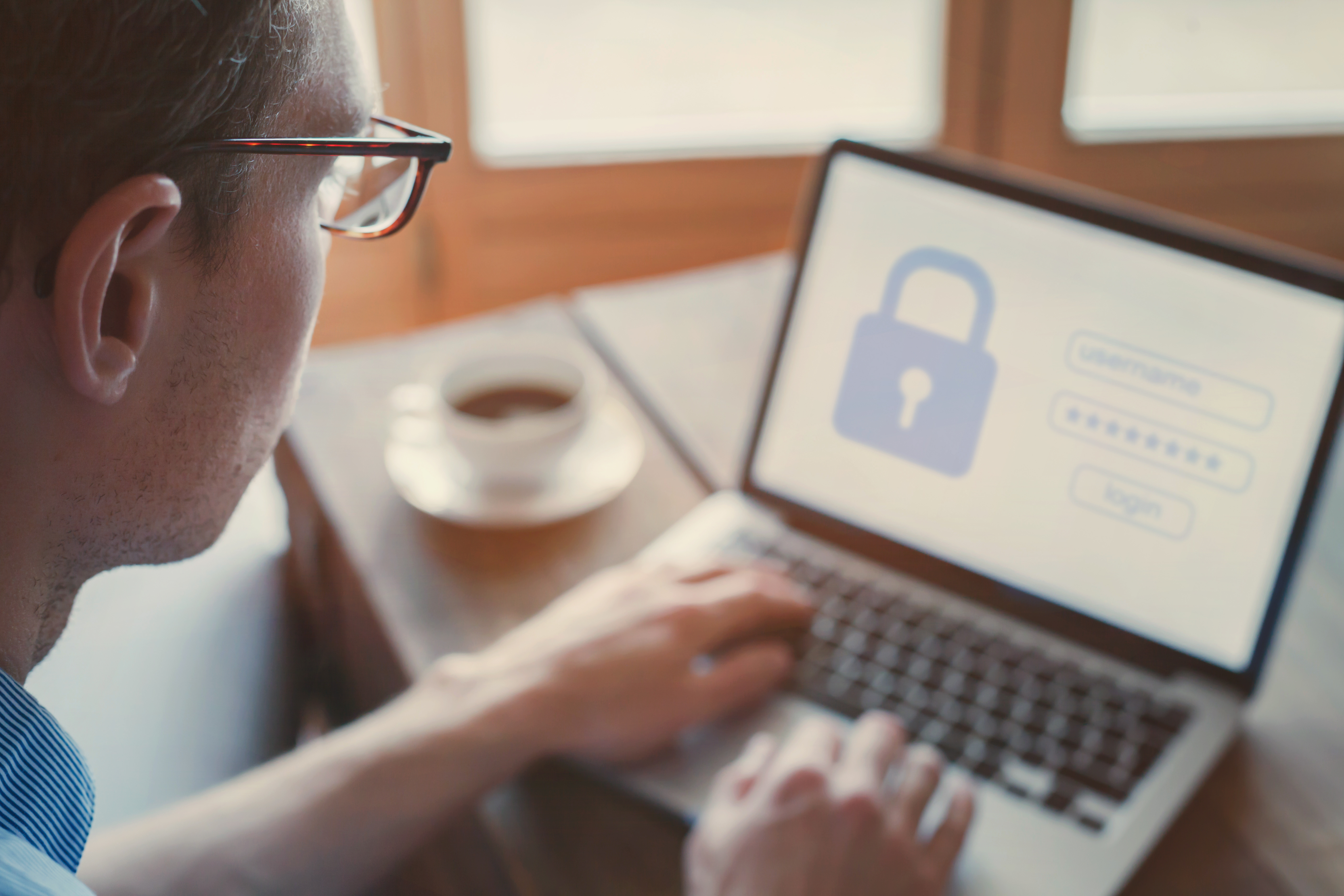Comprehensive Overview: What is Cybersecurity?

When we think of technology, various integral parts of our daily lives come together.
No matter how much we move forward with technology when it comes to secure personal information, people always rely on cybersecurity services. Let’s learn from scratch - what is cybersecurity?
Simply put, cybersecurity is protecting computers, networks, servers, and data from unauthorized access, attacks, and other security breaches. It is a method where users get protection in their digital landscape from many online threats such as phishing emails, financial transactions, data leaks, and personal information breaches.
Fact: As of 2023, 300,000 fresh malware instances are generated daily - 92% distributed through email - with an average of 49 days to be detected.
What are the Types of Cybersecurity?
Cybersecurity threats can cause big problems for people, companies, and governments. They can lead to losing money, someone stealing your identity, and harm to your reputation. These attacks are grouped based on how they happen. There are several types of cybersecurity that focus on different aspects of this protection. We have listed some of the major types of cybersecurity here.
-
- Network Security
-
Network security is like locking doors and windows to keep your house safe. In the digital world, it is about protecting computer systems and information from intruders. This is done by using special tools and rules, such as firewalls that act like security guards, to check who is allowed to come in and who is not.
It also involves hiding secret messages from snooping eyes and ensuring only the right people can see them. Just like you would not share your secrets with anyone, network security helps keep your digital stuff safe from hackers and cybercriminals. It is like having a superhero shield for your computer world!
- Physical Security
-
Physical security is like having strong locks and guards protecting a building or place in the real world. It is about ensuring only the right people can get in and keeping the ones who should not be there out. This can include things like a password manager, security cameras, fences, and special badges that only certain people can use.
Physical security helps keep important things safe, like computers, money, and sensitive documents. You would not want a stranger coming into your room and taking your valued possessions. Similarly, having physical security helps stop strangers from getting into places they should not be. You can consider physical security a shield from the real world to keep things safe and sound.
In Time Tec Suggests: Using a Password Manager helps you remember and keep your online passwords safe so you can use them easily and stay protected. Make sure to use one!
-
- Social Engineering and Phishing Prevention
-
Social engineering is when someone tricks or manipulates you into doing something you should not, like sharing secrets or giving them money. It is like a clever approach to make you trust them, but their intentions are bad. To prevent this, you should be cautious and not share personal information with strangers, even if they seem nice.
Phishing prevention is like catching fake fish in a big digital sea. Phishers send messages that look real, like those from your bank, but they are actually trying to steal your information. You should never click on strange links or give away passwords to stop this. It is like not opening a mystery box from someone you do not know. Being careful and checking before you share info online helps you stay safe from these tricky traps. Not only this, but AI in fraud detection is also predominating nowadays as they are beneficial in improving data accuracy, scalability, and reducing financial risks.
-
- Wireless Security
-
Wireless security is like protecting your secret messages when sending them through invisible airwaves. Imagine your voice is a secret code, and you are using walkie-talkies. You would want to make sure only your friends can hear, right? Wireless security does this for your devices, like phones and laptops, that use Wi-Fi or Bluetooth.
-
It uses strong locks called encryption to ensure only your gadgets can understand the messages. Think of it as speaking in a secret language only you and your friends know. This way, no sneaky eavesdroppers can understand what you are saying. It is like keeping your private conversations safe from curious ears in the digital world, and this way, you can also reduce the negative impact of cybercrime.
-
Fact: Phishing remains the most common cyberattack, with approximately 3.4 billion daily spam emails.
-
- Industrial Control System or ICS Security
-
Industrial Control System (ICS) Security means keeping important factories, power plants, and other big machines safe from computer-based attacks. These attacks can mess up how these machines work or even stop them, causing problems.
ICS Security ensures that only the right people can control these machines and that hackers and intruders cannot get in. It is like putting locks on doors and checking for any problems regularly to keep everything running smoothly and prevent any accidents or damage. This kind of security helps keep our essential machines working well and keeps us safe.
-
- IoT Security
-
IoT Security, or Internet of Things Security, is the protection of smart devices that can connect to the Internet and talk to each other. These devices include things like smart thermostats, cameras, watches, and even smart doorbells. Since these devices can collect and share personal information or control important things like appliances and medical devices, IoT Security is crucial. Think of it as locking the doors and windows of your digital world. Just like you use a key to keep your home safe, IoT Security uses special codes and safeguards to keep hackers and bad actors out. It also makes sure that the devices themselves are strong against attacks.
-
IoT Security is like a digital bodyguard. It watches for any unusual activities and fixes problems to prevent any harm. With good IoT Security, you can enjoy the benefits of smart devices while knowing that your privacy, data, and control are well-protected.
-
In Time Tec says ICS security keeps big machines and important systems safe from computer attacks, so everything runs smoothly and people stay safe.
-
- Endpoint Security
-
Endpoint Security is the protection of individual devices, like computers and smartphones, from cyber threats. It is like having a guard for each device. This guard watches for defective stuff like viruses and hackers, making sure the device and the data on it stay safe. Endpoint Security uses tools like antivirus software and firewalls to create a strong defense, preventing unauthorized access and keeping your digital stuff secure.
- Cloud Security
-
Cloud Security is like a guardian for your online storage and services. When you use the cloud to save files or use apps, Cloud Security makes sure they are safe. It sets up virtual walls and locks to protect your data from hackers and unauthorized access.
It is like having a safe vault for your digital stuff. Cloud Security also keeps an eye out for unusual activities, just like a security guard, and alerts you if something is wrong. This way, you can use the cloud for storing, sharing, and working on things without worrying about your information being lost or stolen.
-
- Data Security
-
Data Security is like a digital shield that keeps your valuable information safe from harm. It ensures that only the right people can access and use your data. Think of it as a lock for your digital files, such as photos, documents, and emails.
-
Data Security uses special locks (encryption) and strong passwords to prevent anyone else from peeking at your stuff. It also watches for suspicious activities, like someone trying to break in, and alerts you if something seems wrong. With Data Security, you can trust that your personal information is guarded and that your digital world remains private and protected.
So, these types of cybersecurity are like an army of defenders, each with their own skills. They work together to keep our digital world safe and fun. Get ready to learn about these cyber superheroes and how they keep us safe in the exciting world of cybersecurity.
Fact: The healthcare industry has been the costliest for ransomware breaches for 12 consecutive years, with an average data breach cost reaching $10.10 million.
Why is Cybersecurity Important?

You must be thinking about why cybersecurity is important. Well, cybersecurity acts as a virtual shield protecting our personal information, financial data, and online interactions from potential threats and malicious activities. There are various reasons why your business needs a cybersecurity expert, but first, understand why cybersecurity is important.
- Protection of Personal Information: We share personal data online, from financial details to personal photos. Cybersecurity ensures this information remains confidential, preventing identity theft and financial fraud.
- Prevention of Data Breaches: Businesses and individuals store sensitive data online. Cybersecurity prevents unauthorized access, avoiding the disastrous consequences of data breaches.
- Safe Digital Transactions: Online shopping and banking are routine. Cybersecurity ensures that transactions are secure, shielding us from cybercriminals seeking to steal funds.
- Business Continuity: Companies rely on digital systems for operations. Cybersecurity safeguards against cyberattacks that could disrupt services, maintaining business continuity. Also, using Data Science is an integral part of the future growth of your business.
- Preservation of Trust: Strong cybersecurity builds trust. Customers trust businesses that protect their data, while individuals trust platforms that prioritize their privacy.
- Mitigation of Ransomware: Ransomware attacks hold data hostage. Cybersecurity helps prevent such attacks and minimizes their impact.
- Safety of Critical Infrastructure: Industries like healthcare and energy depend on digital systems. Cybersecurity protects critical infrastructure from potential attacks that could risk lives.
- Defense Against Malware: Malware can harm systems and steal data. Cybersecurity tools detect and remove malware, ensuring the integrity of systems.
- Global Security: Cybersecurity contributes to national and global security, preventing cyberattacks that could disrupt essential services and cause chaos.
- Promotion of Innovation: A secure digital environment encourages innovation by fostering trust in innovative technologies and ideas.
- Protection from Phishing and Social Engineering: Cybersecurity defends against phishing emails and social engineering tactics that trick individuals into revealing sensitive information or performing harmful actions.
Fact: Phishing attacks are responsible for 90% of data breaches.
- Preservation of Intellectual Property: Organizations invest in research and development. Cybersecurity prevents intellectual property theft, safeguarding innovations and competitive advantage.
- Prevention of Reputation Damage: Cyberattacks can tarnish reputations. Robust cybersecurity prevents breaches that could lead to negative publicity and loss of trust.
- Safeguarding Individuals: The internet exposes vulnerable individuals, including children, to risks. Cybersecurity ensures their safety by blocking inappropriate content and interactions.
- Preventing Cyberbullying: Cybersecurity tools can help combat cyberbullying, protecting individuals, especially young people, from emotional harm.
- Ensuring Privacy in the IoT Era: With the rise of Internet of Things (IoT) devices, cybersecurity safeguards our privacy in a world where devices collect and share data.
- Mitigation of Insider Threats: Cybersecurity prevents unauthorized insiders from exploiting their access to harm systems or leak sensitive data.
- Compliance with Regulations: Many industries have regulations mandating data protection. Cybersecurity ensures compliance, avoiding legal issues and penalties.
- Enhancing National Security: Governments rely on cybersecurity to protect critical national infrastructure and sensitive government data from cyberattacks.
- Protection of Healthcare Data: Cybersecurity safeguards patient records and medical information, ensuring confidentiality and integrity.
- Maintaining Trust in E-commerce: E-commerce thrives on trust. Cybersecurity ensures that customers can make online purchases without fearing data theft.
- Supporting Remote Work: As remote work becomes common, cybersecurity enables secure remote access to company resources and data.
- Preventing Disruption of Services: Cyberattacks can disrupt essential services like utilities, transportation, and communication. Cybersecurity prevents such disruptions.
- Safe Sharing of Information: Cybersecurity allows secure information sharing between individuals and organizations, fostering collaboration without compromising safety.
- Long-Term Financial Savings: Investing in cybersecurity can save organizations money in the long run by preventing costly breaches and their associated expenses.
In Time Tec says cybersecurity helps prevent hackers from breaking in, viruses from causing trouble, and your personal stuff from getting into the wrong hands. It is all about making sure your online world stays safe and private.
What are the Business Challenges of Cybersecurity?
Now you know why cybersecurity is important, as it helps keep computer systems and information safe from intruders who try to steal or damage them. Here are the most talked about challenges of cybersecurity that businesses face.
- Rapidly Evolving Threat Landscape: The rapidly evolving threat landscape means that new and different kinds of cyberattacks are constantly emerging and changing.
Challenge: Cyber threats constantly evolve, making it challenging for businesses to keep up with new attack vectors and vulnerabilities.
In Time Tec Suggests: Stay updated with the latest threat intelligence, conduct regular risk assessments, and implement a proactive approach to cybersecurity. Invest in threat detection and response systems that use advanced analytics and machine learning to identify emerging threats.
- Skills Shortage: There are not enough people with the right skills to help protect computers and information from being attacked.
Challenge: There is a shortage of skilled cybersecurity professionals, making it difficult for organizations to find and retain qualified personnel.
In Time Tec Suggests: Invest in training and upskilling existing staff. Consider outsourcing some cybersecurity tasks to specialized firms or adopting managed security services. Collaboration with educational institutions can also help bridge the skill gap by fostering the development of future cybersecurity experts.
- Complexity of IT Infrastructure: Businesses often have intricated and interconnected computer systems, networks, software, and devices that can be challenging to manage effectively due to their complexity and diversity.
Challenge: Modern businesses have complex IT environments with various devices, networks, and software, making it hard to ensure consistent security across all endpoints.
In Time Tec Suggests: Implement a comprehensive cybersecurity framework that includes network segmentation, strong access controls, and continuous monitoring. Use security automation tools to streamline security management and response processes.
- Insider Threats: Insider threats refer to the risk of employees or people within an organization accidentally or intentionally causing harm to the company's data, systems, or security.
Challenge: Insider threats, including malicious or negligent actions by employees or contractors, can pose a significant risk to business data and systems.
In Time Tec Suggests: Implement strict access controls, user monitoring, and behavioral analytics to detect abnormal behavior. Promote a culture of cybersecurity awareness and provide training to employees about the risks of insider threats.
- Budget Constraints: There might not be enough money available to properly protect the company's computer systems and information from cyber threats.
Challenge: Many businesses struggle to allocate sufficient budget for cybersecurity initiatives.
In Time Tec Suggests: Conduct a cost-benefit analysis to demonstrate the potential impact of a cyber incident on the organization's bottom line. Prioritize cybersecurity spending based on risk assessments and regulatory compliance requirements. Consider the long-term costs of a breach when justifying investments.
- Regulatory Compliance: This follows the rules and standards set by laws and regulations to ensure that the company's actions and practices meet legal requirements for cybersecurity and data protection.
Challenge: Businesses often need to comply with various cybersecurity regulations and standards, which can be complex and demanding.
In Time Tec Suggests: Stay informed about relevant industry regulations and implement processes and controls that align with compliance requirements. Consider using compliance management tools to track and demonstrate adherence to regulations.
- Third-Party Risk: Third-party risk refers to the potential dangers that can arise from working with outside companies, vendors, or partners who may not have strong cybersecurity measures in place, putting your own company's data and systems at risk.
Challenge: Businesses are exposed to cyber risks through their relationships with third-party vendors and partners.
In Time Tec Suggests: Conduct thorough security assessments of third-party vendors before engaging with them. Include cybersecurity requirements in contracts and agreements, and regularly review third-party security practices.
- Lack of Executive Support: Lack of executive support means that the top leaders of the company are not giving enough attention or resources to cybersecurity efforts, which can make it harder to protect the organization from cyber threats.
Challenge: Without dedicated support from top management, cybersecurity initiatives may not receive the necessary attention and resources.
In Time Tec Suggests: Communicate the potential business impact of cyber threats to your leadership team members regarding financial losses, reputation damage, and legal consequences. Develop a clear cybersecurity strategy that aligns with business objectives.
Frequently Asked Questions

- What are some common types of cyber threats?
Common cyber threats include malware (such as viruses and ransomware), phishing attacks, denial-of-service (DoS) attacks, and insider threats.
- How can I protect my computer and data from cyber threats?
You can protect your computer and data by using strong, unique passwords, keeping software and antivirus programs up to date, being cautious of suspicious emails and links, and regularly backing up your data.
- What is two-factor authentication (2FA)?
Two-factor authentication is an extra layer of security that requires users to provide two different authentication factors (e.g. a password and a temporary code sent to your phone) to access an account.
- What is a firewall?
A firewall is a security device or software that monitors and controls incoming and outgoing network traffic to block unauthorized access and prevent cyber threats. Many web app development companies are already integrating security system services to make sure protection is already in place.
- What is encryption?
Encryption is the process of converting information into code to prevent unauthorized access. It ensures that even if data is intercepted, it remains unreadable without the decryption key.
- What is a data breach?
A data breach occurs when unauthorized individuals gain access to sensitive or confidential data, potentially exposing it to theft or misuse. You can prevent further exposure by learning what to do after a data breach.
- What is a vulnerability assessment?
A vulnerability assessment is the process of identifying and evaluating weaknesses in a computer system or network that could potentially be exploited by cyber attackers. Thus, make sure you refine your legacy systems on time.
- How can businesses manage third-party cybersecurity risks?
Businesses can manage third-party cybersecurity risks by conducting thorough vendor assessments, setting security requirements in contracts, and regularly monitoring third-party activities for compliance.
- What is the role of cybersecurity in compliance with regulations like GDPR or HIPAA?
Cybersecurity is crucial for compliance with regulations like GDPR (General Data Protection Regulation) and HIPAA (Health Insurance Portability and Accountability Act) as it ensures the protection of sensitive data and the privacy of individuals. Similarly, SACA, a new bill that was signed by President Joe Biden on March 15, 2022, ensures new security reporting requirements for critical infrastructure entities.
- How can businesses create a cybersecurity culture?
Businesses can create a cybersecurity culture by providing regular training and awareness programs to employees, promoting good security practices, and fostering a sense of shared responsibility for cybersecurity.
- What is a phishing attack?
A phishing attack is a type of cyberattack where attackers send fake emails or messages that appear legitimate to trick recipients into revealing sensitive information or clicking on malicious links.
- What is ransomware?
Ransomware is a type of malware that encrypts a victim's data and demands a ransom payment in exchange for the decryption key.
- What is a zero-day vulnerability?
A zero-day vulnerability is a software vulnerability that is exploited by attackers before the software developer has had a chance to release a fix or patch.
- What is penetration testing?
Penetration testing, also known as ethical hacking, is the practice of simulating cyberattacks to identify vulnerabilities and weaknesses in a system's security to secure the company’s future.
- What is a Security Information and Event Management (SIEM) system?
A SIEM system is a software solution that aggregates and analyzes security data from various sources to provide real-time monitoring and threat detection.
- What is a security breach incident response plan?
An incident response plan outlines the steps a company should take in the event of a security breach to minimize damage, contain the threat, and recover effectively.
- What is a security patch?
A security patch is a software update released by a vendor to fix vulnerabilities in their software and protect users from potential cyber threats.
- What is multi-factor authentication (MFA)?
Multi-factor authentication requires users to provide two or more authentication factors (e.g. password, fingerprint, and a smart card) to access a system or account.
- What is endpoint security?
Endpoint security focuses on securing individual devices (endpoints) such as computers, smartphones, and tablets from cyber threats.
- What is the dark web?
The dark web is a part of the internet that is intentionally hidden and inaccessible through regular search engines. It is often associated with illegal activities and black market transactions.
- What is cybersecurity hygiene?
Cybersecurity hygiene refers to adopting good security practices such as keeping software updated, using strong passwords, regularly backing up data, and being cautious online.
- What is security awareness training?
Security awareness training educates employees and users about cybersecurity best practices and helps them recognize and respond to potential threats.
- What is a secure coding practice?
Secure coding practices involve writing software code in a way that minimizes vulnerabilities and potential security risks, enhancing the overall security of software applications.
- What is a security policy?
A security policy is a set of guidelines, rules, and practices that outline how an organization will protect its information, systems, and assets from security threats.
- What is a virtual private network (VPN)?
A VPN is a technology that creates a secure and encrypted connection between a user's device and a remote server, enhancing privacy and security when browsing the internet.
- What is the General Data Protection Regulation (GDPR)?
GDPR is a comprehensive data protection regulation in the European Union (EU) that aims to protect the personal data and privacy of EU citizens and residents.
- What is the Payment Card Industry Data Security Standard (PCI DSS)?
PCI DSS is a set of security standards designed to ensure the safe handling of credit card information by organizations that process, store, or transmit such data.
- What is the “3-2-1 Rule” in cybersecurity?
The “3-2-1 Rule” in cybersecurity means having three copies of your data stored in two different formats, with one of the copies kept off-site, to ensure data recovery in case of a cyber incident.
- What is the risk formula for cybersecurity?
The risk formula in cybersecurity is the likelihood of a threat occurring multiplied by the potential impact of that threat, helping assess the level of risk to a system or organization.
Final Words
Cybersecurity is crucial for businesses as it offers multiple advantages to run your business process smoothly and efficiently. As said, it safeguards sensitive information like customer data, financial records, and trade secrets. This protects a company's reputation and avoids legal issues from data breaches. We cannot deny the fact that strong cybersecurity enhances customer trust, as people are more likely to engage with a business that prioritizes their privacy.
Additionally, compliance with cybersecurity regulations demonstrates a commitment to ethical practices and can avoid hefty fines. It also fosters innovation by creating a secure environment for research and development. You can rely on In Time Tec for all your cybersecurity needs!
Feel like you could use a hand?
See what’s possible and give your teams the ability to create positive change.
Contact NowElevate your tech savvy! Warning: May cause increased knowledge.
Exclusive technology and development insights, tips, and podcasts await.

%20Design%20Process%20for%20a%20Web%20App__Hero.jpeg?width=352&name=24Jan_%20What%20is%20the%20User%20Experience%20(UX)%20Design%20Process%20for%20a%20Web%20App__Hero.jpeg)
